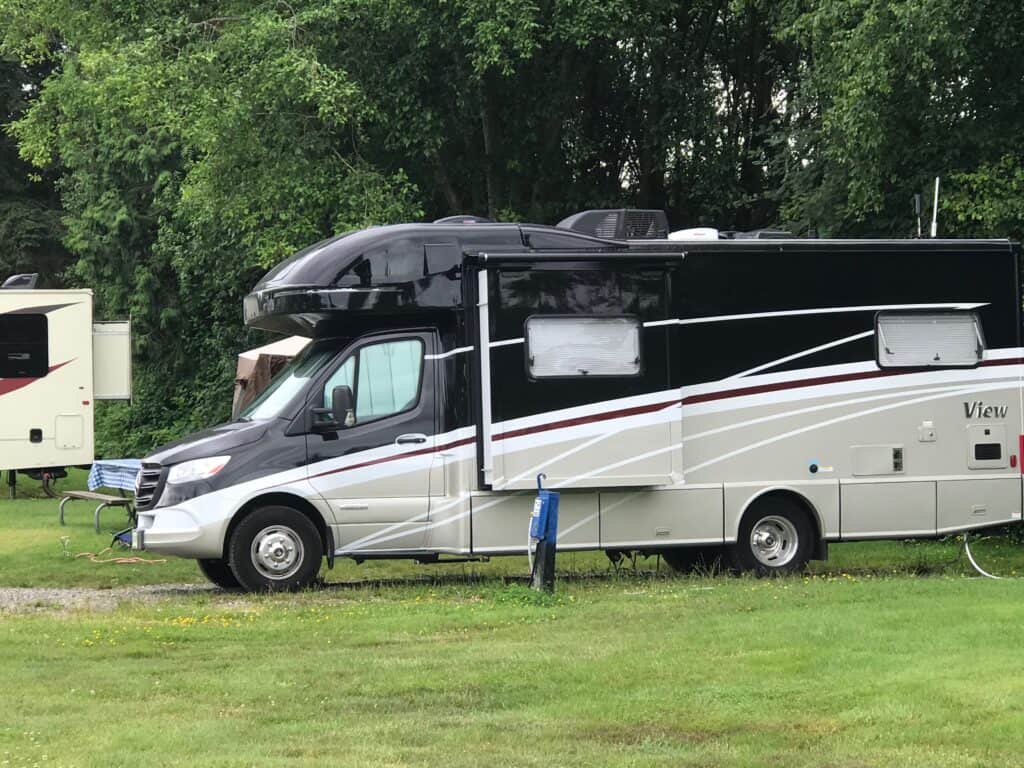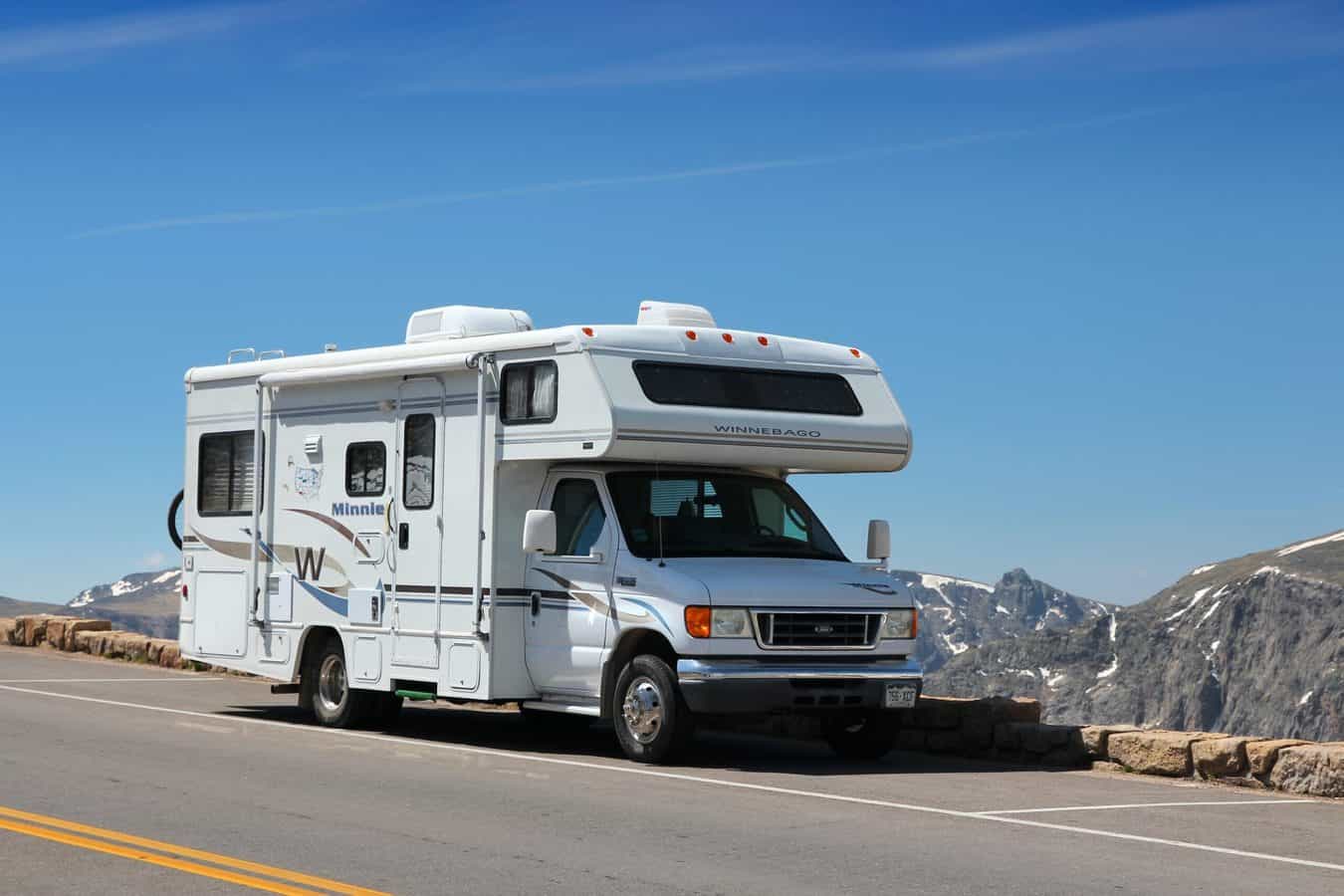
What Is The Average Cost Of Insurance On A Class C Motorhome?
Auto insurance is required in almost every state, and motorized RVs such as a Class A, Class C, and van conversions fall into that same category. It’s not exactly the same coverage for a car and an RV, but if you have a drivable RV, and auto insurance is required in your state, then insurance will also be required for your motorhome.
Every state has their own specific requirements. For more information on insuring your RV, check out RVerInsurance.com.
Basic requirement is PIP Coverage
A Personal Injury Protection Insurance (PIP) plan is the general category of minimum coverage that is required by almost every state, but as you can see from the examples below, the limits vary from state to state. The minimum insurance requirement is designed to help injured people get back on their feet after an accident regardless of who was at fault in the accident.
Many states have no fault insurance laws, so these liability coverages or PIP insurance plans are applicable to any injured party. As a side note: If your state does not require PIP insurance for your motorhome, you will be personally responsible for the costs of any injuries you cause to others or suffer yourself in an accident, and you will also be in violation of the law if you drive your motorhome to other states where insurance is required and you have none.
State requirements
If you drive an RV (as opposed to towing one or having one mounted on a truck), you will need to purchase these liability coverages, but you don’t need to memorize what is required because all insurance underwriter or online insurance estimate apps will know and account for the minimum requirements in your particular state.
Remember, liability insurance is the type of insurance that covers damage and injuries you may cause others in a collision. But as you can see from the examples below, uninsured motorist coverage may also be required, and that coverage would offset your losses if you are involved in an accident with an uninsured motorist.

Examples of Minimum PIP Insurance
Here are a few samples of minimum insurance requirements in no particular order. If your state is not listed below, you can find your state’s information here.
Oregon
- Bodily injury: $25,000 per person and $50,000 per accident
- Property damage: $20,000 per accident
- Personal injury protection: $15,000 per person
- Uninsured motorist coverage bodily injury: $25,000 per person and $50,000 per accident
Pennsylvania
- Bodily injury liability coverage: $15,000 per person, $30,000 per accident
- Property damage liability coverage: $5,000
- Uninsured motorist coverage: $15,000 per person, $30,000 per accident*
- Underinsured motorist coverage: $15,000 per person, $30,000 per accident*
- First party benefits: $5,000
*Note: In Pennsylvania, you may request to reject the uninsured and underinsured motorist coverages.
Wyoming
- Bodily injury: $25,000 per person and $50,000 per accident
- Property damage: $20,000 per accident
- Uninsured motorist bodily injury: $25,000 per person and $50,000 per accident*
*Note: Uninsured motorist bodily Injury coverage can be rejected in writing.
Alabama
- Bodily injury liability: $25,000 per person and $50,000 per accident
- Property damage liability: $25,000 per person
- Uninsured/underinsured motorist bodily injury: $25,000 per person and $50,000 per accident*
*This coverage can be rejected.
California
- Bodily injury liability coverage: $15,000 per person / $30,000 per accident minimum
- Property damage liability coverage: $5,000 minimum
- Uninsured motorist bodily injury coverage¹: $15,000 per person / $30,000 per accident minimum
- Uninsured motorist property damage coverage¹: $3,500 minimum
New York
- Bodily injury liability coverage: $25,000 per person and $50,000 per accident
- Property damage liability coverage: $10,000 per accident
- Uninsured/underinsured bodily injury coverage: $25,000 per person and $50,000 per accident
- Personal injury protection: $50,000

Minimum RV insurance requirements
Now that you know what some of the minimum requirements are for motorhome insurance, you may want to go beyond the minimum to really protect yourself and your assets in all types of hazardous conditions.
There are many types of insurance to protect the casual weekend RVer all the way up to insurance for a full-time traveler. Everyone’s needs are different. You might have a brand new $500,000 Class C RV or a vintage Class C coach that you picked up to rebuild and restore. The insurance you purchase for these two types of RVs is very different.
You may store your RV for six months every year or live in it year-round, and when shopping for insurance, your specific use should inform your decision. Certainly, with a new expensive Class C, you’d want to include a full replacement clause in both the comprehensive and collision portions of your policy, but you wouldn’t be able to add that to your vintage Class C. If you’re going to store your RV for the winter, shop for insurance that allows you to discontinue coverage for the winter months. If you live in your RV, you’ll want year-round protection.
Common types of RV insurance
Common types of insurance you could purchase (and probably should purchase) for your Class C motorhome include the following. There are other insurance categories like medical and umbrella coverage which might be worth discussing with your insurance agent, but these are the most common.
- Collision
- Comprehensive
- Liability
- Personal Effects Replacement Insurance
- Roadside Assistance

What is the average cost of insurance on a Class C motorhome?
The average Class C motorhome insurance cost is between $800 and $3000, according to Classic Van’s website, depending on your state, your driving record, the types of coverage you want, the limits of loss, and the deductibles. This is a broad range, so do your due diligence, but don’t just let the cost drive your decision.
We all hope we never need to file an insurance claim, but if you do have an accident or get caught in a damaging hailstorm, you’ll be thankful you have a layer of protection to cover your financial exposure. It’s hard enough to deal with the aftermath of an accident or any damage to your rig, but also having to shoulder the entire financial loss would be even more tragic.
Find the right RV insurance
You can start with policy shopping from an online provider like RVerInsurance.com. RVer Insurance Exchange offers free quotes for RV Insurance, Health Insurance, even Extended Warranties.
Related articles:





I don’t know how other owners took your article but my first thought who buys minimum coverages especially if you own a newer high end rv. I recently tried to purchase a policy with 300,000 property damage and could not fine one. It was a good basic article.